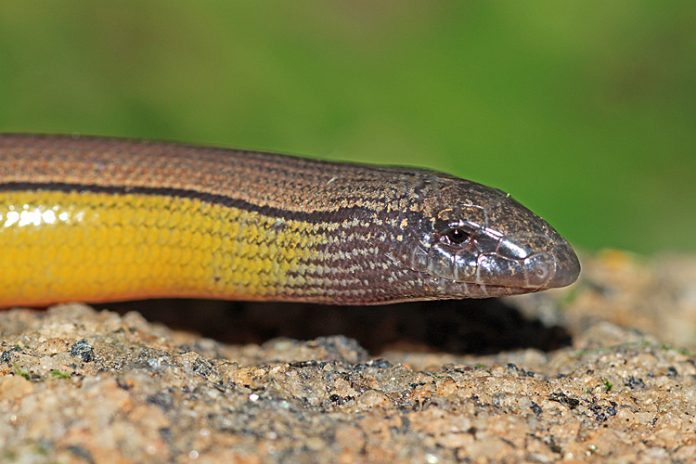Eric Kwon
Science & Technology Editor
It looks practically indistinguishable from a snake, but it is in fact a lizard. Straight to the point, the California Legless Lizard, otherwise known as Anniella pulchra, are forced to slither along soily grounds due to their lack of limbs.
The lizard’s territory is maintained inside of California on the coastal southern end of the state, including Santa Barbara County. Despite its modest territorial area, they inhabit a generous range of habitats. They have been documented from sea level to 6000 feet. Apart from the main coastal areas, they have also been seen in valleys, deserts, and mountains. Nevertheless, they need moisture-rich and soily areas for survival, so they would most likely be found in the sandy and marshy areas on campus.
The California legless lizard’s lack of limbs may be confusing in exactly how they contrast from snakes. Two main characteristics distinguish these lizards: They have moveable eyelids (snakes do not have any eyelids), and they can detach the ends of their tails to elude predators.
These lizards are considerably variable in their appearance, boasting a palette of colors that include metallic silver, dark brown, black, and beige. In fact, the California legless lizard had only until recently been categorized into two subspecies, those being the silvery legless lizard and the black legless lizard. Universally, they seem to have a shovel-shaped head. They also have a dark line along its back and thin stripes on its shiny scales.
They are not particularly large creatures, only measuring from 4-7 inches in length, so it would be pretty unlikely to see them on or around campus. Furthermore, they have nearly become an endangered species, in part due to oil and gas drilling. The drilling damages vital habitats by compacting soil, changing moisture levels, and scattering plant covers, not to mention the oil and chemical spills that are prone to occur during these drilling sessions.
Construction, climate change, invasive species, and other developing threats are detrimental as well. Despite these mounting concerns, the California legless lizard does not seem to be on any endangered database as of yet. Generally, not a tremendous amount of information has been found about these creatures, so that may play into a factor in the limited concern for their species.
In terms of their diet, these lizards mostly eat insect larvae and adult beetles. They forage at the base of vegetation, leaf litters, and sandy soil, where they also feast on small invertebrates like small insects and spiders. As aforementioned, moisture is pivotal to their habitat, as wetter areas allow them to shed easier. They have also been documented drinking directly from moist soil, since drinking from standing water may be a death sentence for legless animals. One look down at surfaced worms after a night of heavy rain says it all.
On the same line, the California legless lizard may look like strange, occasionally shiny worms, or perhaps a baby snake, but with a keen eye for their unique characteristics, these reptiles can be appreciated on campus and throughout the California area. Hopefully, conservation efforts to save this unique species can be taken seriously. The habitats that they live in would not be what they are without the California legless lizard.











